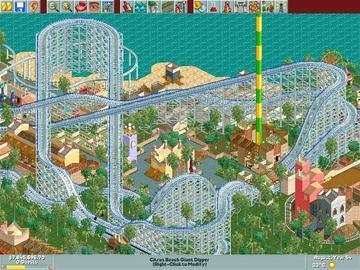Think Video Game:Create Multiple Levels of Entry into Your E-Learning
Playing a game that is too difficult is not fun. Playing a game that is too easy is not fun either. Therefore, the quandary for game developers is to create a game that is neither too hard nor too easy. But when developing a game for a broad audience of unknown skill sets, the task becomes even more daunting. How do you create a game that appropriately challenges players at multiple levels of expertise and experience?
The answer is to create a game that is both easy and hard through the use of different levels of entry into the game. Providing an easy, intermediate and difficult version of the same game, more players are able to enjoy and partake in the game play as opposed to just one level. This can be done on the initial selection screen with a Novice, Intermediate, or Expert level selection or can be based on character selection.
Create an extremely difficult level designed for more experienced players with faster bad guys, more challenging puzzles and less time to complete levels.
Then create a mode where everything is slower, help bubbles pop up on the screen to provide guidance and challenges are more manageable. This level appeals to novice gamers who are just trying to learn how the game works and who need simple challenges and basic assistance as they play the game. The novice level provides a comfortable way for new players to acclimate to the game.
The third level created is usually the intermediate level which is aimed at the middle level of difficulty providing the game space where most players will play. The three levels also increase the replayability of the games. Once someone defeats the game at the easy level, they may challenge themselves with the hardest level to see how they will do under more difficult circumstances.
This concept of creating three different game play levels can be easily transferred to the creation of educational games or e-learning. When creating an educational game consider designing three levels of interaction into the game. You can develop an easy, intermediate and hard level which can be effective for catching the attention of a wide audience. Designing three levels makes it more accessible to learners and may encourage them to replay the game.
Another three level approach for an educational game is to create a demonstration, practice and test mode. Each level providing different information and a different level of challenge.
If you were creating a game to teach someone how to use piece of equipment or how to conduct an interview, you might want to create one level where the learner watches a demonstration of the proper procedure or technique. This provides the learner with knowledge and information. In essence, the first level provides the instruction and teaching needed to perform the task. This level would be for someone who was a complete novice.
The next level would be the practice level where the learner is given guidance and feedback on whether or not they are performing the right tasks. This mode might provide arrows, hints, instructions, highlights and advice to the learner as he or she follows the procedure. This level would give enough help to guide the learner toward achieving the goal.
Next, create a test or mode where the learner is not given any guidance but they are timed, they must complete the game within a certain amount of time. They are tested on how accurately or efficiently they complete the level.
Bonus Fourth Level: Free Play. Create a “Free Play level” so the players can just explore the game independently and are not evaluated, guided or given any directions–a sandbox version.
Bonus Level Five: Create Extra In-Game Objectives. As an extra level, create job related missions or tasks that are difficult but not serious game play however, they are directly related to things learners have to do on the job. Provide a chance for the learner to apply what he or she is learning directly to the task at hand in a similar environment to what he or she would actually be doing on the job or in the classroom laboratory. This is similar to Roller Coaster Tycoon where the players get to play at different objectives, some are to get a certain number of people into the amusement park the player builds and others are to build a really cool roller coaster.

Build an awesome coaster.
Providing different entry levels into one game provides access to players or learners with different knowledge levels, allows players to experience the game at different difficulty levels and provides a way to make the game accessible to a broad audience.
Posted in: Content Guide
Leave a Comment (0) ↓